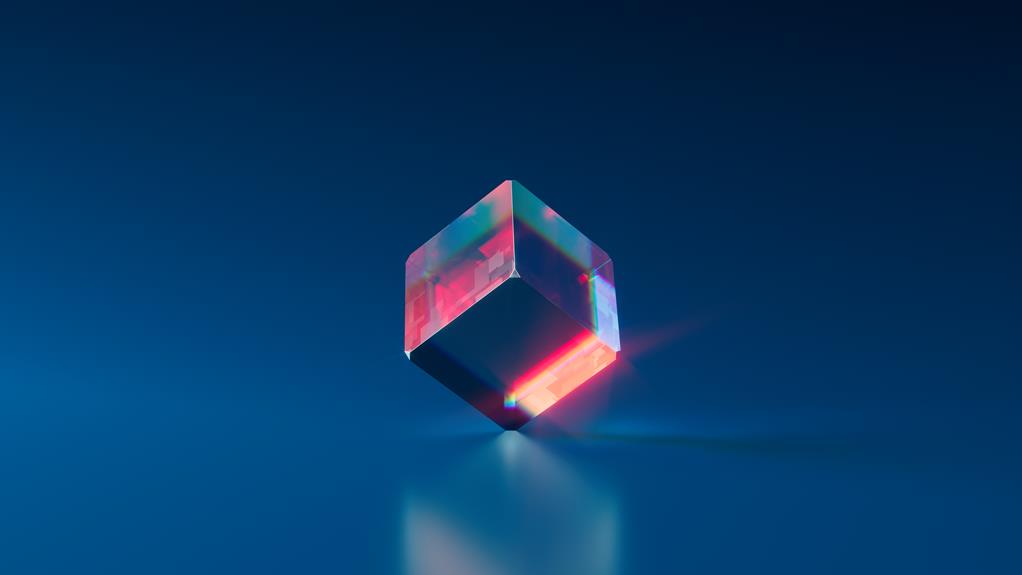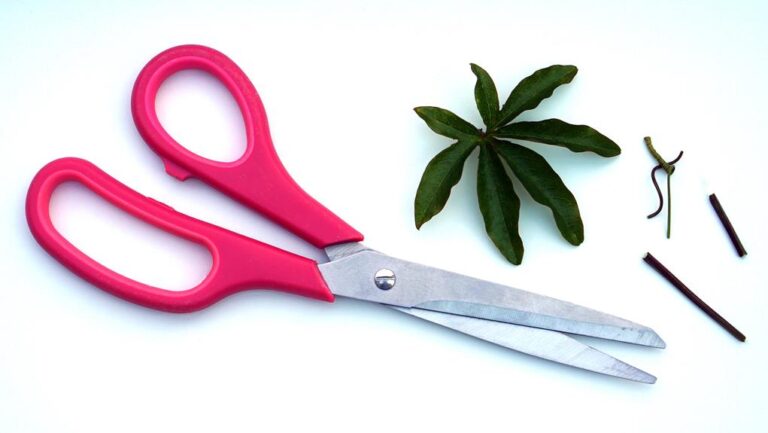SLS Vs. MJF 3D Printers: Selecting the Perfect Powder-Based Printer
In the rapidly evolving world of 3D printing, the selection of a powder-based printer can be a daunting task. The battle between Selective Laser Sintering (SLS) and Multi Jet Fusion (MJF) 3D printers has intensified, leaving users seeking the perfect choice.
This article aims to provide a detailed analysis of the strengths and limitations of both SLS and MJF printers, as well as their material compatibility. By delving into the technical aspects, this piece aims to empower the audience in making an informed decision.
Key Takeaways
- SLS and MJF 3D printers offer the ability to produce complex and durable parts with high precision, making them ideal for creating functional prototypes, end-use parts, and intricate models.
- These printers have a wide range of material choices, including nylon, polycarbonate, and metal powders, allowing for versatility in printing different types of designs.
- While they have limitations such as a high cost of equipment and materials, limited material range compared to other 3D printing technologies, and struggles with intricate designs, advancements in technology and the introduction of new materials are addressing these limitations.
- MJF 3D printers have faster print times compared to other powder-based printers due to parallel processing, high printing speed, and efficient heating and cooling cycles, making them suitable for users requiring quick turnaround times.
Strengths of SLS 3D Printers
One of the key strengths of SLS (Selective Laser Sintering) 3D printers lies in their ability to produce complex and durable parts with high precision. SLS printers utilize a powder-based printing method, where a laser selectively fuses the powdered material layer by layer to create the desired object. This technology allows for the production of intricate designs that would be challenging or impossible to achieve with other 3D printing techniques.
Compared to MJF (Multi Jet Fusion) 3D printers, SLS printers have several advantages. Firstly, SLS printers offer a wider range of material choices, including nylon, polycarbonate, and even metal powders. This versatility enables the production of parts with different mechanical properties, catering to a variety of applications.
Furthermore, SLS printers are known for their excellent surface finish and dimensional accuracy. The laser-based process ensures precise melting and solidification of the powdered material, resulting in parts with high levels of detail and smooth surfaces. This makes SLS printers ideal for creating functional prototypes, end-use parts, and even intricate models for architectural or medical purposes.
Limitations of SLS 3D Printers
However, despite its many strengths, there are some limitations associated with SLS (Selective Laser Sintering) 3D printers.
One of the main limitations is the high cost of the equipment and materials. SLS printers require specialized technology and high-quality powders, which can be expensive. Additionally, the process of sintering the powder requires energy-intensive lasers, further adding to the overall cost.
Another limitation is the limited range of materials that can be used in SLS printing. While SLS printers can handle a variety of materials such as nylon, thermoplastic elastomers, and metal powders, the selection is still more limited compared to other 3D printing technologies. This can be a drawback for industries that require specific material properties for their applications.
Furthermore, SLS printers have certain limitations when it comes to producing intricate and complex designs. The resolution of the final prints may not be as high as with other technologies, resulting in less fine detail. Additionally, SLS printers may struggle with printing overhanging or unsupported structures, as the powder needs support during the sintering process.
Material Compatibility With SLS 3D Printers
To ensure successful printing outcomes, it is important to consider the material compatibility and its suitability for SLS 3D printers. SLS printers are known for their versatility in working with a wide range of materials. Here are three key factors to consider when evaluating material compatibility with SLS 3D printers:
- Melting Point: The melting point of the material is crucial as SLS printers use a high-powered laser to selectively melt the powdered material. It is essential to choose materials with a melting point that falls within the operating range of the printer. If the material's melting point is too high, it may not melt properly, affecting the print quality. On the other hand, if the melting point is too low, the material may melt prematurely during the printing process, causing deformations or incomplete prints.
- Powder Characteristics: The particle size and distribution of the powder used in SLS printers can significantly impact the print quality. Materials with a uniform particle size distribution tend to produce smoother surfaces and better resolution. Additionally, the powder should have good flowability to ensure consistent printing and prevent clogging in the machine's powder delivery system.
- Material Compatibility: While SLS printers generally support a wide range of materials, some machines may have limitations in terms of the types of materials they can process. It is crucial to check the printer's specifications and ensure that the desired material is compatible with the machine. Materials such as nylon, polycarbonate, and TPU are commonly used with SLS printers due to their excellent mechanical properties and printability.
Considering these factors will help users select the most suitable materials for their SLS 3D printers, ensuring optimal printing outcomes and a seamless printing experience.
Strengths of MJF 3D Printers
MJF 3D printers offer several strengths that make them a preferred choice for many applications.
Firstly, they have faster print times compared to other powder-based printers, allowing for quicker production of parts.
Additionally, MJF printers are capable of achieving high resolution outputs, ensuring intricate details and fine surface finishes.
Lastly, these printers are known for their cost-effective material usage, as they have the ability to selectively fuse the powder, reducing wastage and optimizing material utilization.
Faster Print Time
The faster print time of MJF 3D printers is one of their key strengths in comparison to SLS printers. This attribute can greatly benefit users who require quick turnaround times for their projects.
Here are three reasons why MJF 3D printers excel in terms of print speed:
- Parallel Processing: MJF printers have the capability to simultaneously print multiple layers, allowing for faster production. This parallel processing significantly reduces the overall print time.
- High Printing Speed: MJF printers are designed to operate at high speeds, maximizing efficiency without compromising on print quality. This enables users to produce complex models in a shorter span of time.
- Efficient Heating and Cooling: MJF printers utilize a unique heating and cooling process that accelerates the printing process. The combination of quick heating and cooling cycles ensures faster prints, reducing the overall time required for each layer.
With their faster print time, MJF 3D printers provide a valuable advantage to users seeking quick and efficient production.
High Resolution Output
While often overlooked, the high resolution output of MJF 3D printers is a noteworthy strength that sets them apart from other printing technologies. The ability to achieve intricate details and fine surface finishes makes MJF printers ideal for applications that require precision and aesthetics. This is achieved through the layer-by-layer printing process, where a high-quality powder is selectively fused using a heat source. The result is a smooth and accurate final product, with minimal visible layer lines. To showcase the advantages of MJF printers, consider the following table:
| Strengths of MJF 3D Printers |
|---|
| 1. Exceptional detail reproduction |
| 2. Smooth surface finishes |
| 3. High dimensional accuracy |
| 4. Ability to produce complex geometries |
| 5. Fine feature resolution |
The high resolution output of MJF 3D printers not only satisfies the technical demands of various industries but also liberates designers and engineers to explore intricate designs with confidence. This strength seamlessly leads us to the next section, which discusses the cost-effective material usage of MJF printers.
Cost-Effective Material Usage
How can the cost-effective material usage of MJF 3D printers contribute to overall efficiency and savings in the printing process? Here are three reasons why MJF 3D printers excel in this aspect:
- Powder recycling: MJF 3D printers have a built-in system that allows for efficient recycling of unused powder. This means that the powder that is not melted during the printing process can be reused, reducing material waste and saving costs.
- High packing density: MJF 3D printers can achieve a high packing density of parts within the build chamber. This means that more parts can be printed in a single print job, maximizing material usage and reducing the overall cost per part.
- Minimal support structures: MJF 3D printers utilize a powder-based printing method that enables the production of self-supporting structures. This eliminates the need for extensive support structures, reducing the amount of material required and saving costs in both material consumption and post-processing time.
Limitations of MJF 3D Printers
One significant drawback of MJF 3D printers is the limited range of materials available for printing. While these printers offer high-resolution and fast printing speeds, they are often restricted to a smaller selection of materials compared to other 3D printing technologies.
Currently, MJF printers primarily support the use of nylon-based powders, such as PA 12 and PA 11, due to their excellent material properties and compatibility with the MJF process. These materials offer good strength, durability, and surface finish, making them suitable for a wide variety of applications.
However, the limited choice of materials can be a constraint for users who require specific properties or have unique project requirements. For example, if a project requires a material with high heat resistance or chemical resistance, it may not be possible to achieve using MJF technology alone. Additionally, MJF printers cannot print with metal powders, which may be a significant limitation for industries such as aerospace or automotive that often require metal components.
Nevertheless, it is important to note that advancements in MJF technology are constantly being made, and new materials are being introduced to expand the range of options. In the next section, we will explore the current material compatibility with MJF 3D printers and the potential for future material developments.
Material Compatibility With MJF 3D Printers
When considering material compatibility with MJF 3D printers, it is important to take into account the limitations of the material range that can be used. Certain materials may not be suitable for MJF printing due to their properties or inability to fuse effectively.
Additionally, the powder selection process plays a crucial role in achieving desired results, as different powders may have varying melting points and flow characteristics.
Lastly, surface finish considerations must be taken into account, as the choice of material can impact the final surface texture and quality of the printed object.
Material Range Limitations
The material range limitations of MJF 3D printers must be carefully considered when selecting the right powder-based printer for your needs. Understanding the limitations can help you determine whether MJF is suitable for your desired applications. Here are three important factors to consider:
- Material Compatibility:
- MJF 3D printers have specific material compatibility requirements.
- Not all powders are compatible with MJF technology, so it's crucial to ensure that the materials you want to use are supported by the printer.
- Material Availability:
- The range of materials available for MJF printers may be more limited compared to other powder-based printing technologies.
- It is essential to check if the desired materials are readily available and meet your project requirements.
- Material Properties:
- Each material has its own unique properties.
- Not all materials can be used for every application.
- Consider the mechanical, thermal, and chemical properties of the available materials to ensure they align with the functional requirements of your project.
Powder Selection Process
To ensure optimal performance with MJF 3D printers, the powder selection process involves evaluating material compatibility for seamless printing. Material compatibility is crucial as it directly affects the quality and reliability of the printed objects.
When selecting a powder for MJF printing, it is essential to consider factors such as the material's melting point, thermal conductivity, and viscosity. The powder should have a melting point within the operating temperature range of the MJF printer to ensure proper fusion and layer adhesion.
Additionally, thermal conductivity and viscosity of the powder affect the energy transfer and flow characteristics during the printing process. It is vital to select a powder that can efficiently absorb and distribute heat and has suitable flow properties to achieve accurate and consistent prints.
Conducting thorough material compatibility evaluations during the powder selection process is essential to achieve successful and reliable prints with MJF 3D printers.
Surface Finish Considerations
Material compatibility is a key consideration in achieving optimal surface finish with MJF 3D printers. To ensure that the chosen material is compatible with the printer, there are several factors to consider:
- Material composition: Different materials have varying properties that can affect the final surface finish. It is important to select a material that is suitable for MJF 3D printing and can achieve the desired surface quality.
- Powder size and distribution: The size and distribution of the powder particles can greatly impact the surface finish. Finer powders generally lead to smoother finishes, while larger particles can result in a more textured surface.
- Melting and solidification behavior: Understanding how the material melts and solidifies during the printing process is crucial. Some materials may have specific requirements for temperature and cooling rates to achieve the desired surface finish.
Considering these factors and choosing a material that is compatible with MJF 3D printers will help in achieving the desired surface finish and enhance the overall quality of the printed parts.
Frequently Asked Questions
What Is the Cost Difference Between SLS and MJF 3D Printers?
The cost difference between SLS and MJF 3D printers depends on various factors such as machine specifications, material costs, and maintenance. It is essential to evaluate these aspects thoroughly to determine the most cost-effective option for your specific needs.
Are SLS or MJF 3D Printers More Suitable for Large-Scale Production?
In evaluating the suitability of SLS and MJF 3D printers for large-scale production, factors such as print speed, build volume, and material options must be considered. A comprehensive analysis is necessary to determine the optimal choice for this specific application.
Can SLS or MJF 3D Printers Be Used for Printing Metal Parts?
Both SLS and MJF 3D printers have the capability to print metal parts. By utilizing powder-based technologies, these printers offer precision and durability, making them suitable for various industrial applications requiring metal components.
How Do SLS and MJF 3D Printers Compare in Terms of Print Speed?
In terms of print speed, SLS and MJF 3D printers differ due to variations in their respective processes and technologies. However, both printers have demonstrated significant improvements in speed and efficiency, allowing for faster production of high-quality powder-based prints.
What Are the Post-Processing Requirements for Parts Printed With SLS or MJF 3D Printers?
Post-processing requirements for parts printed with SLS or MJF 3D printers vary. SLS parts typically require additional steps such as support removal, sanding, and surface treatment. MJF parts may need minimal post-processing, with support structures easily removed and surface finish more polished.
Conclusion
In conclusion, when it comes to selecting the perfect powder-based 3D printer, the strengths and limitations of both SLS and MJF printers must be carefully considered.
While SLS printers offer superior strength and material compatibility, MJF printers excel in speed and cost-effectiveness.
However, both technologies have their own unique set of limitations.
Ultimately, the choice between SLS and MJF printers depends on the specific requirements and priorities of the user.








